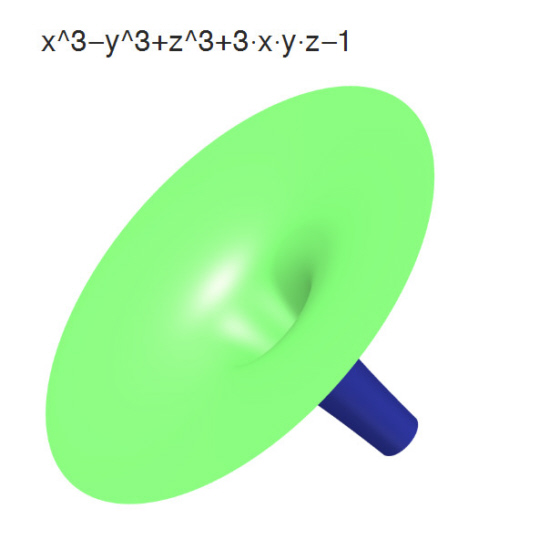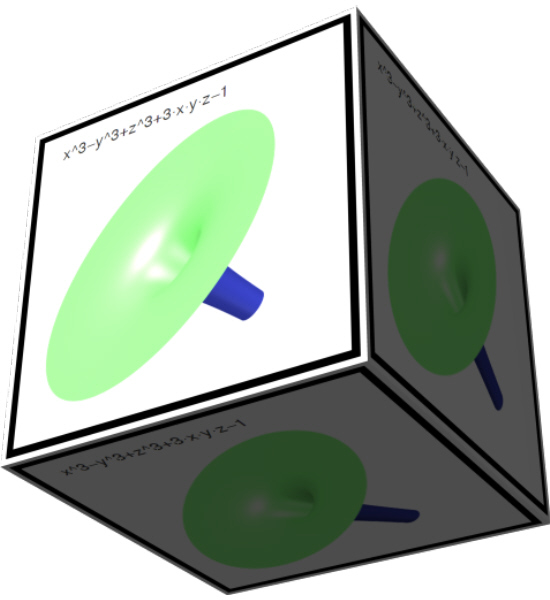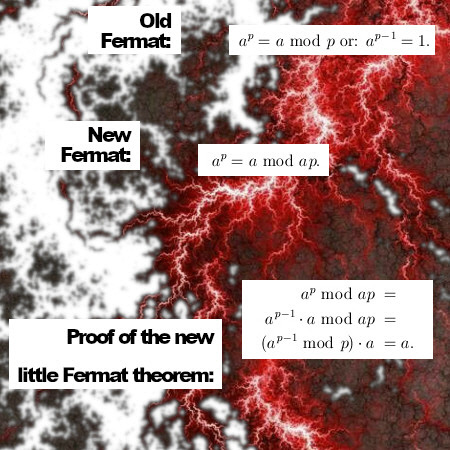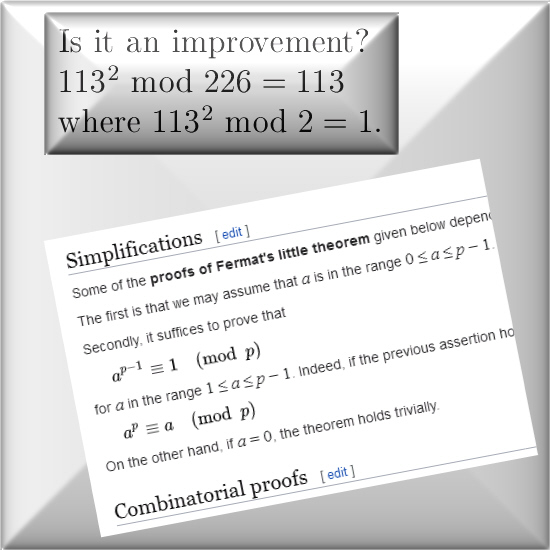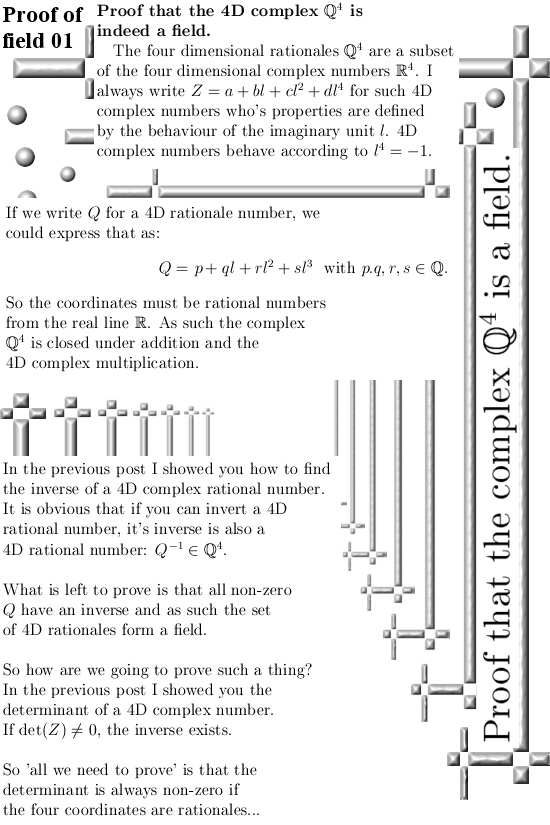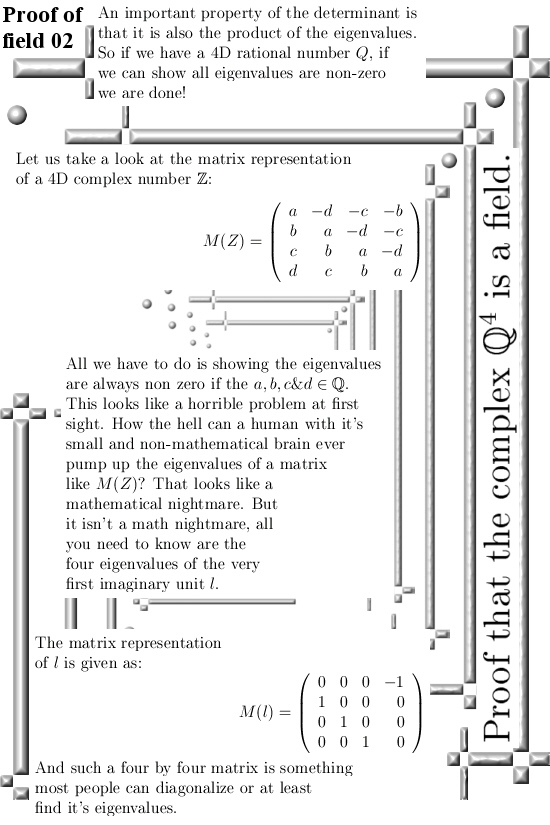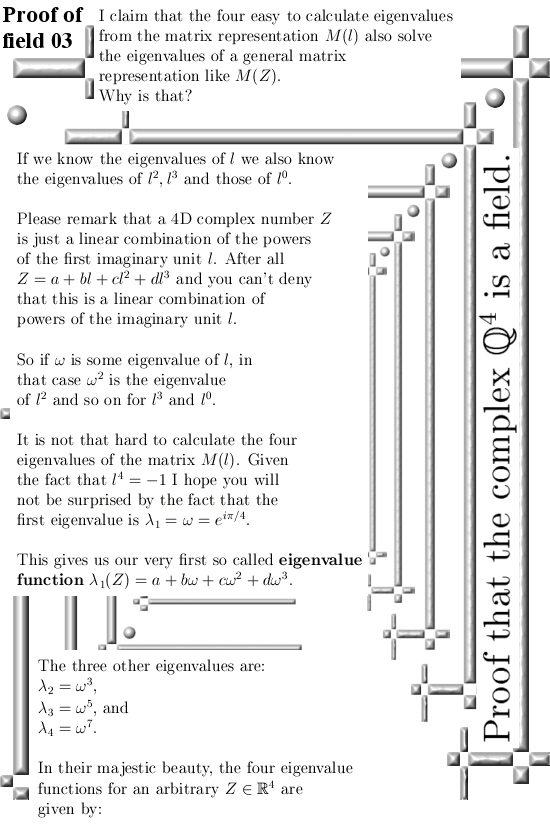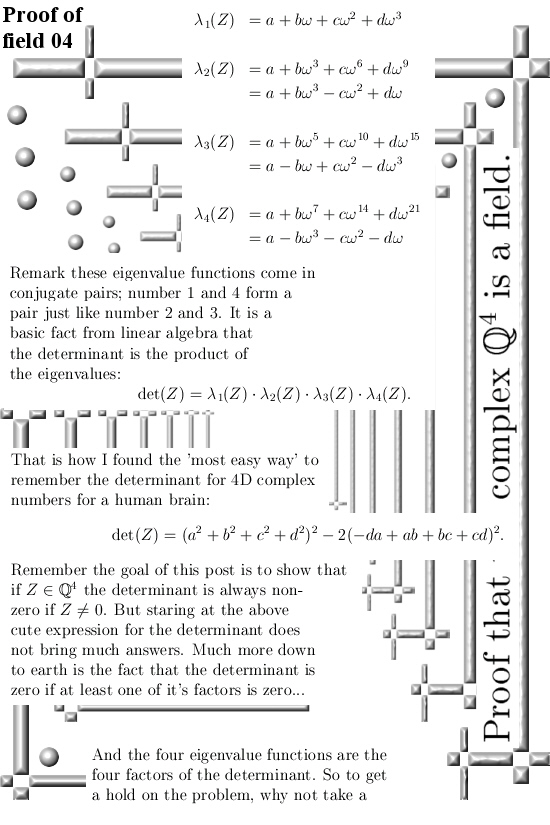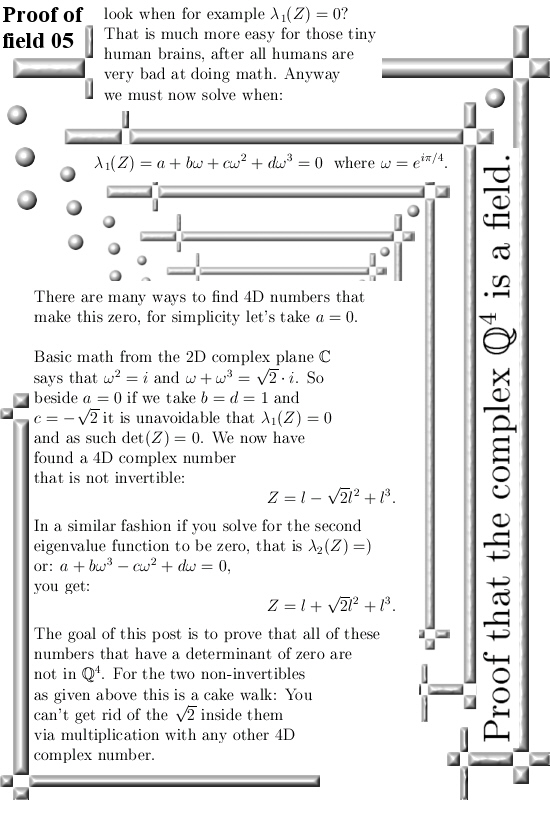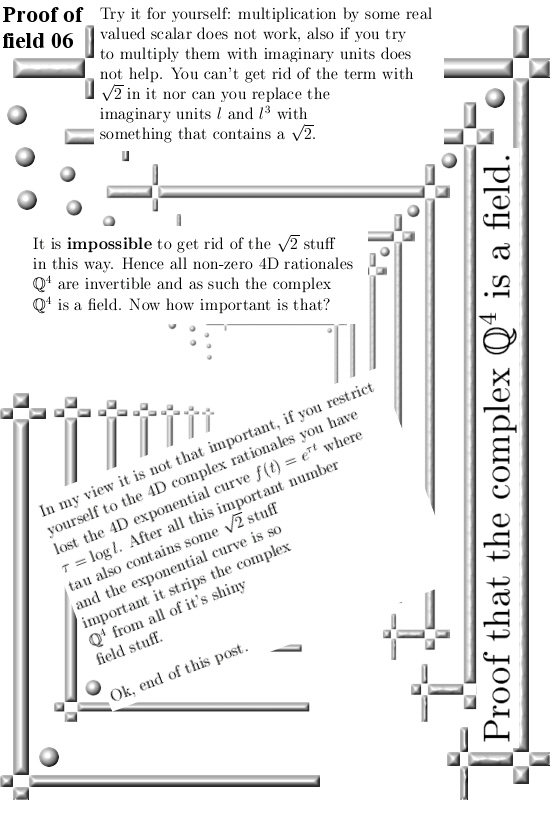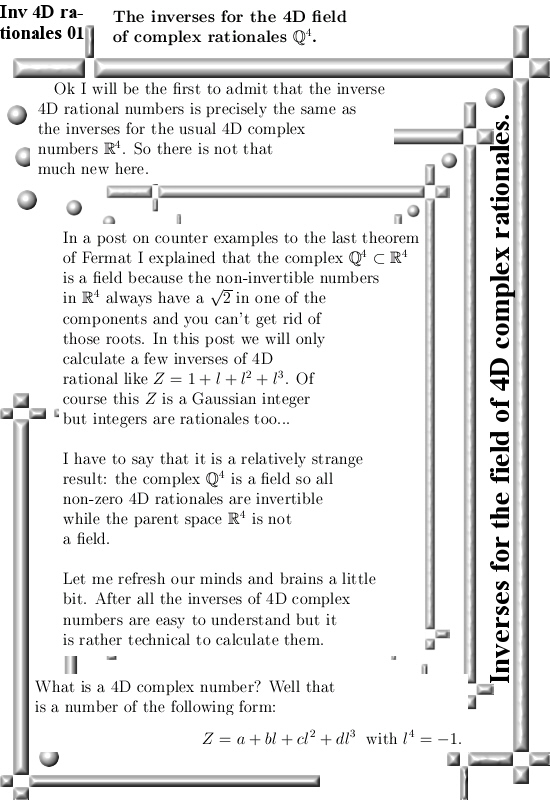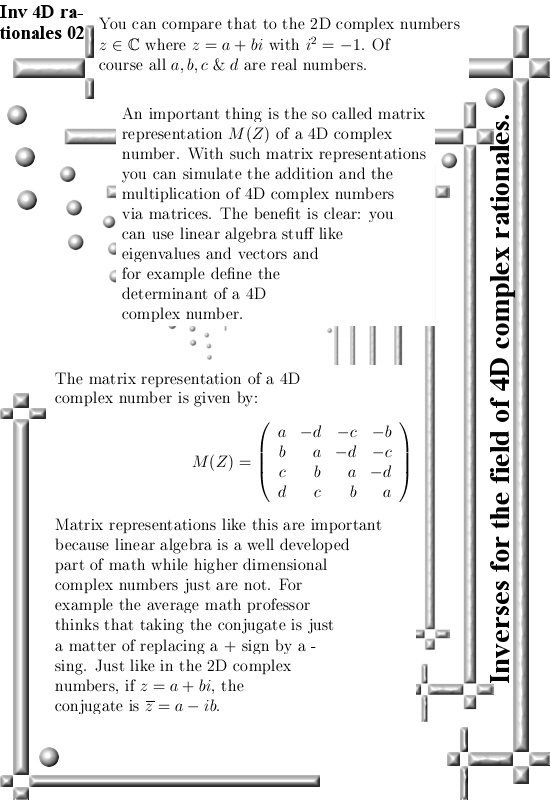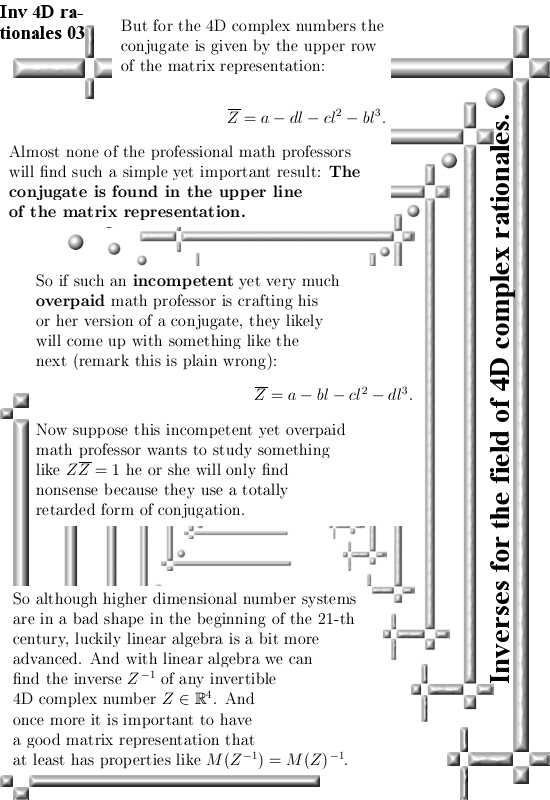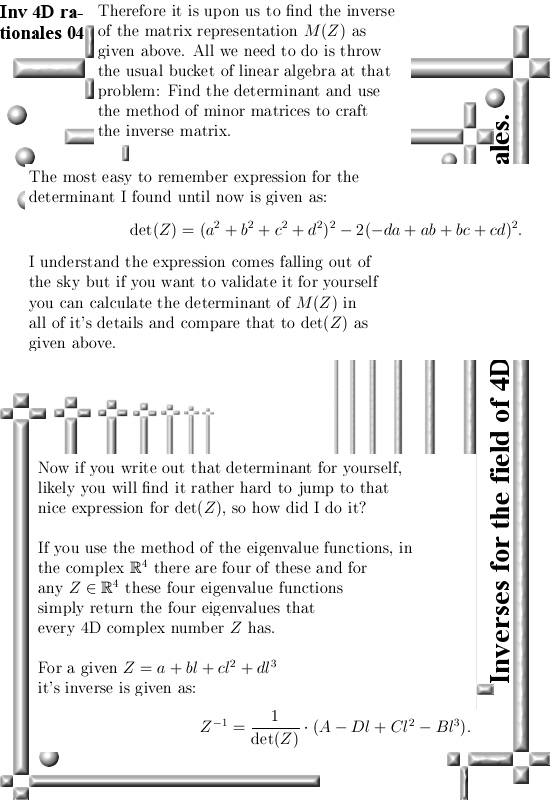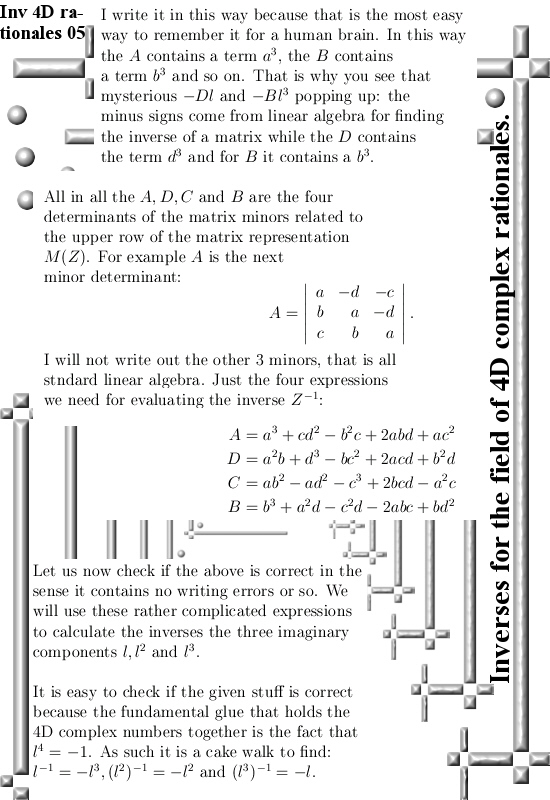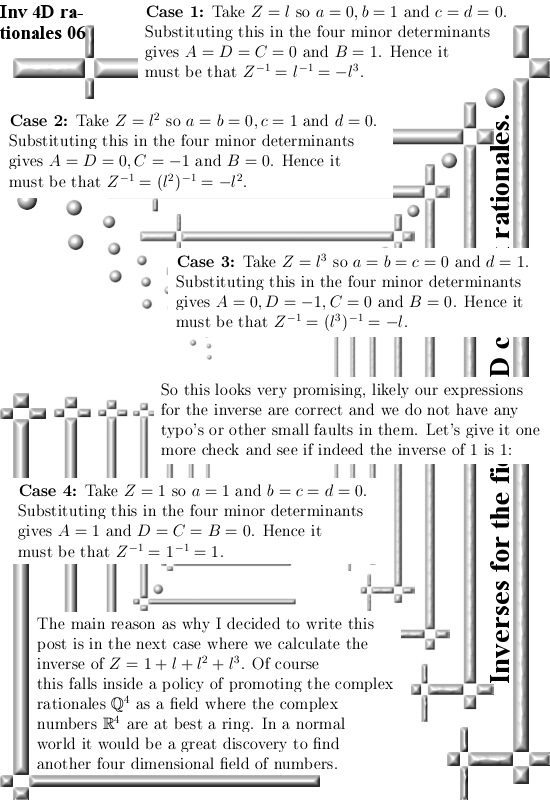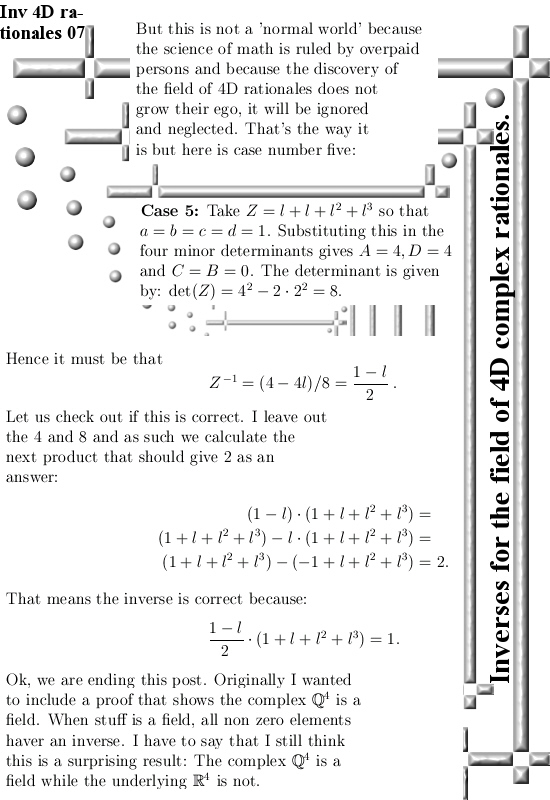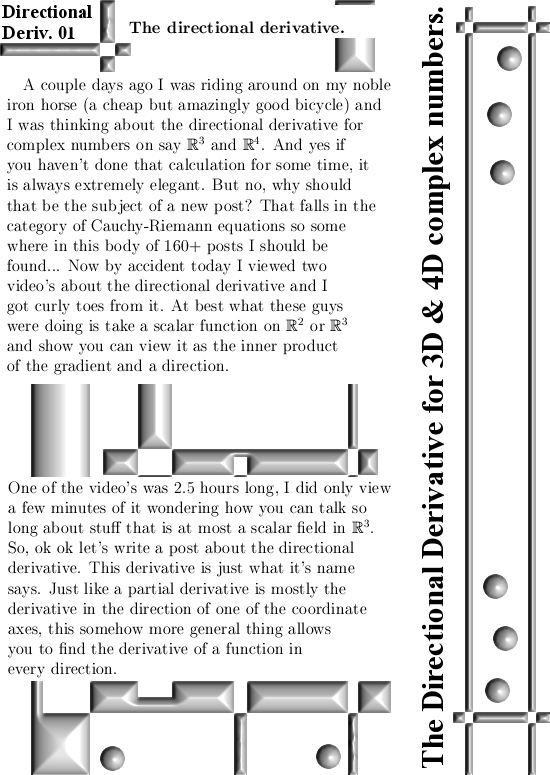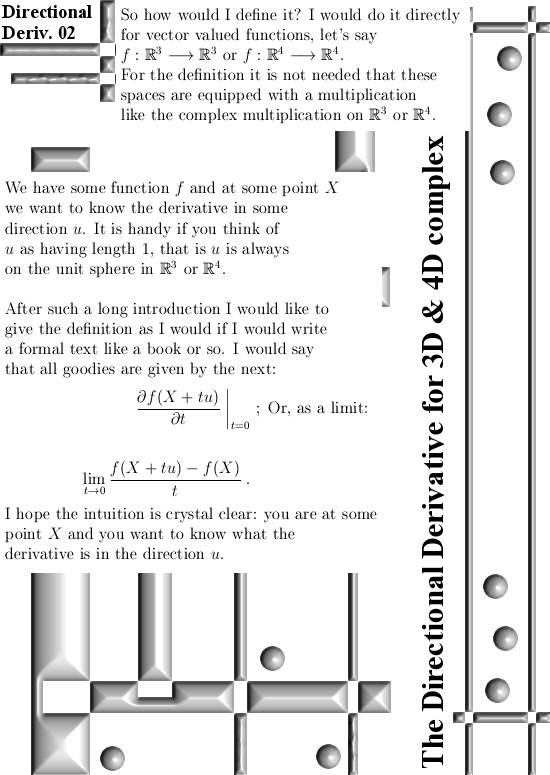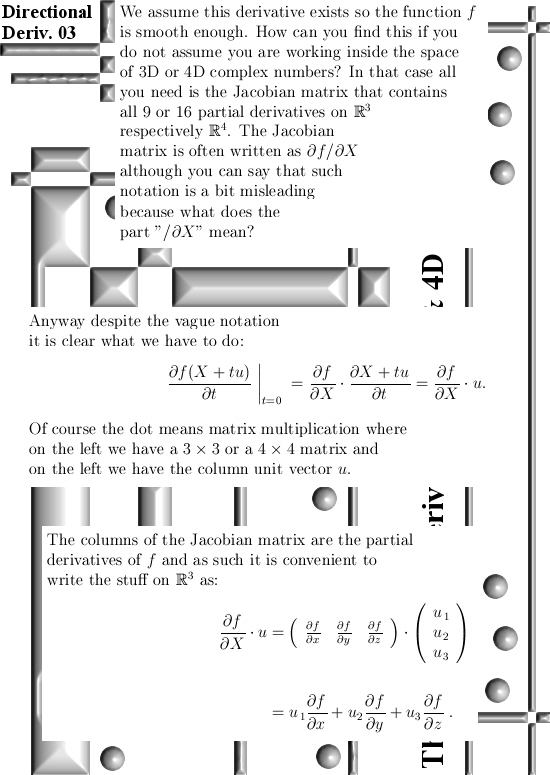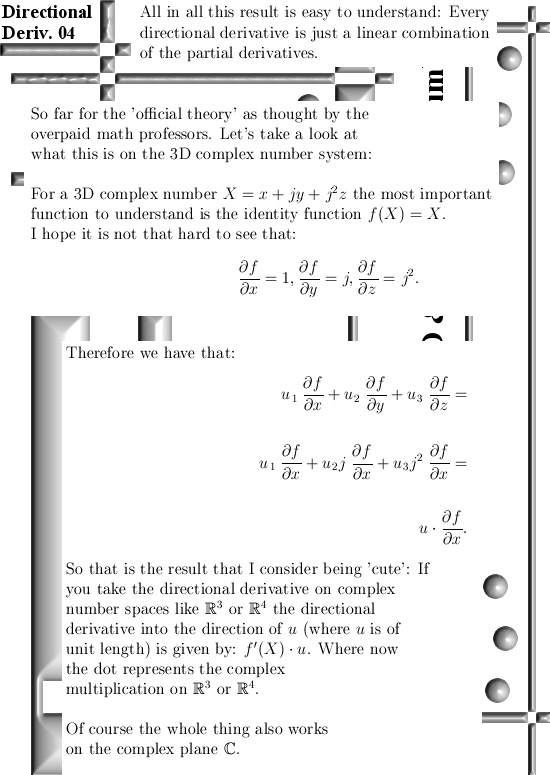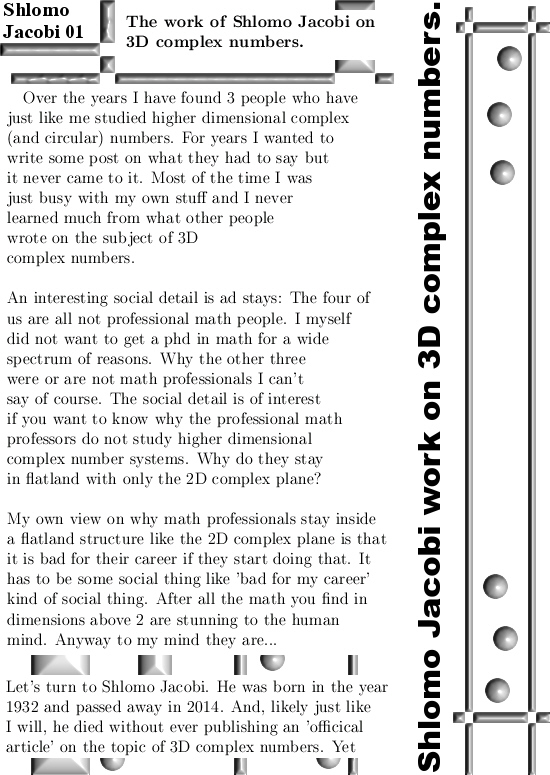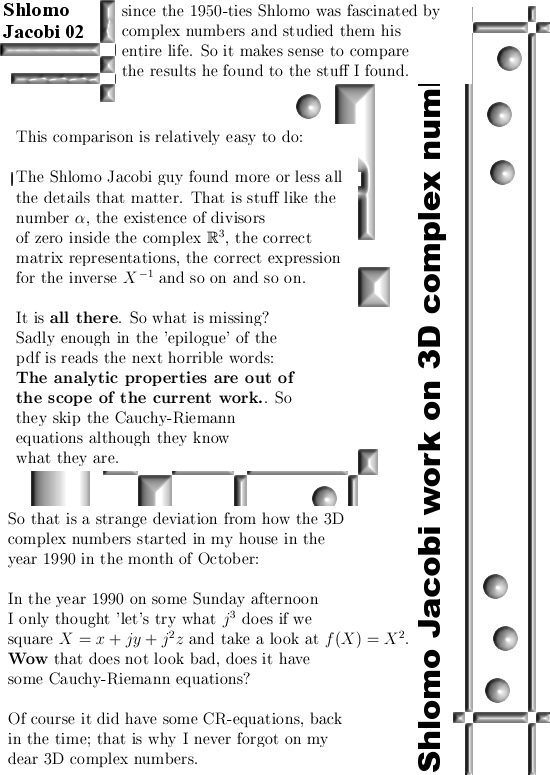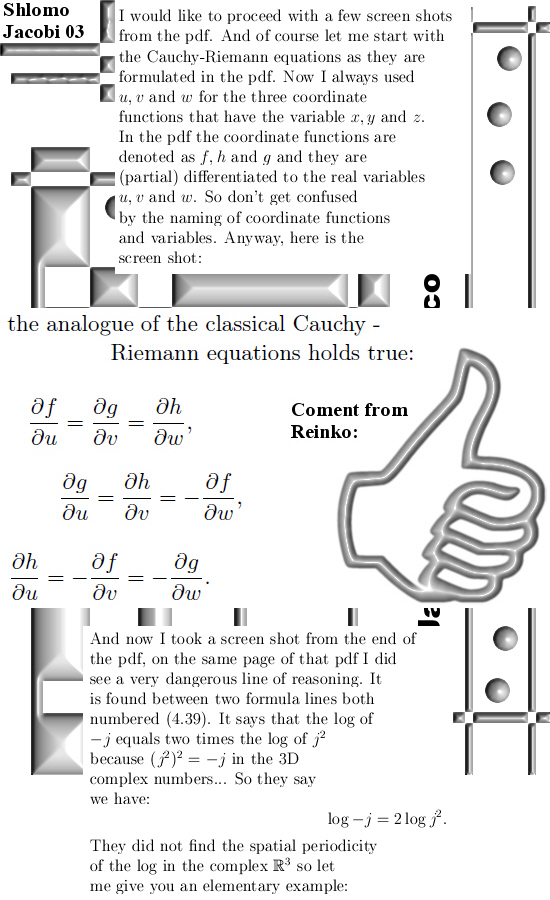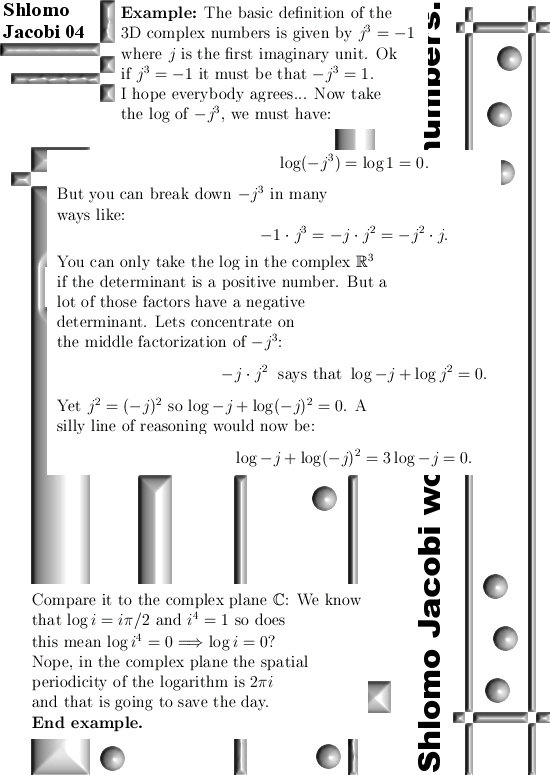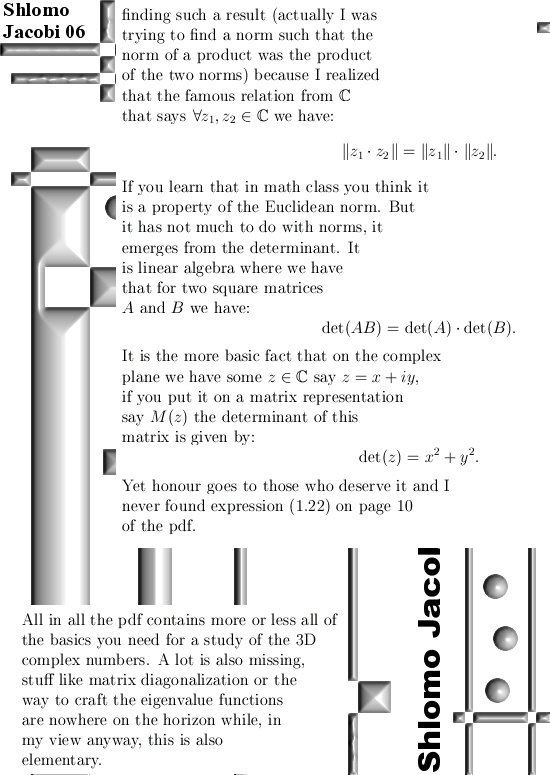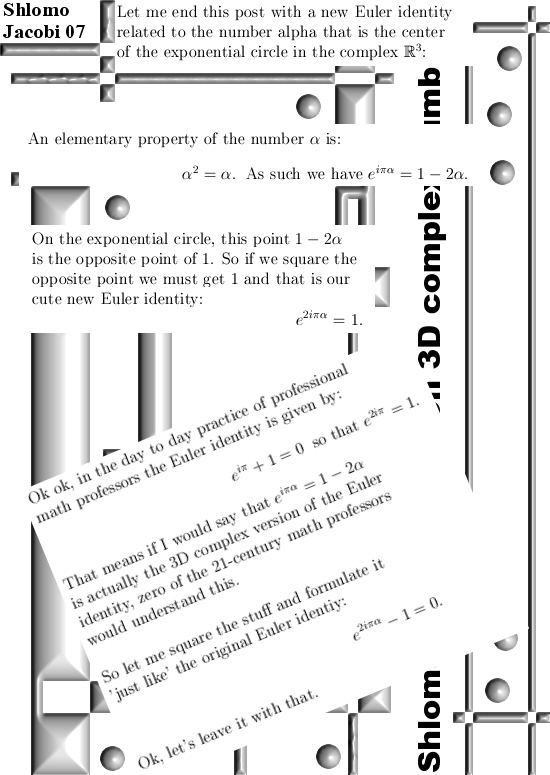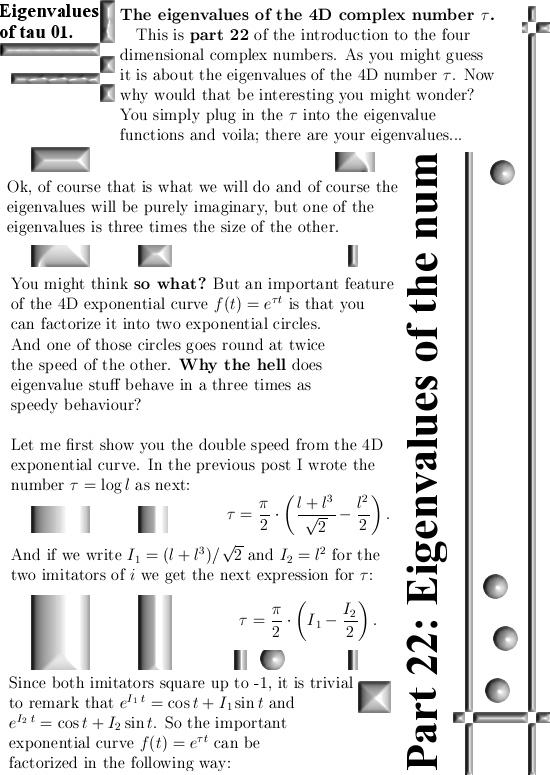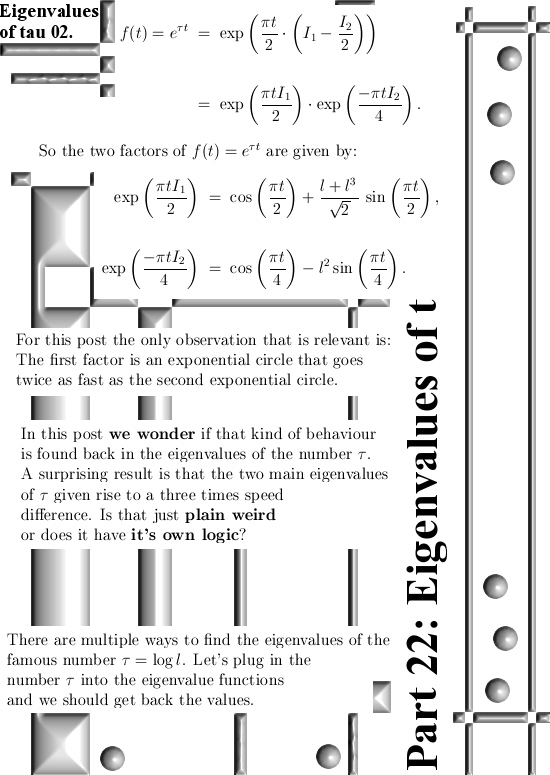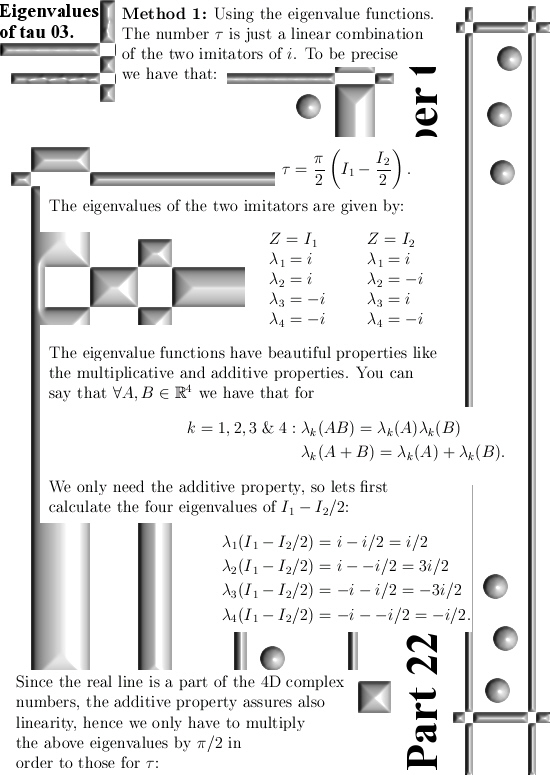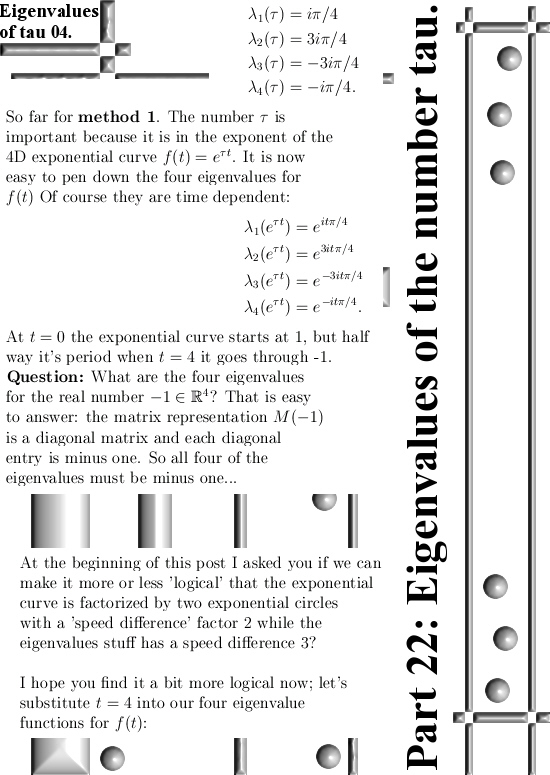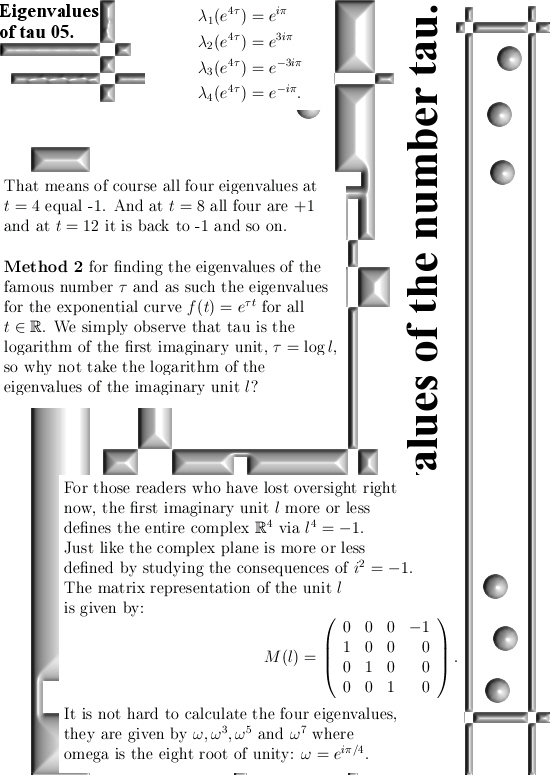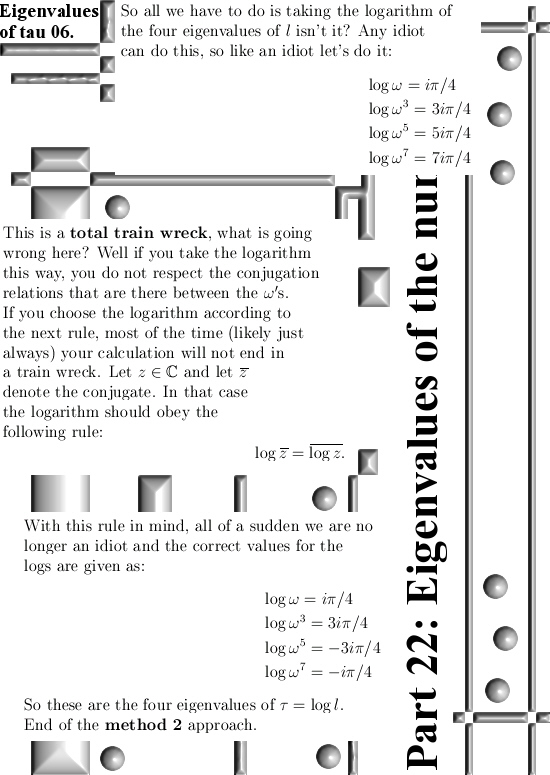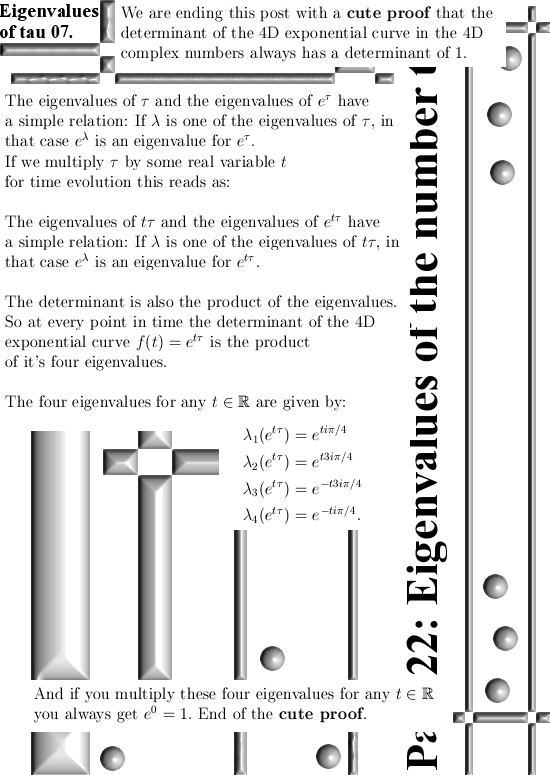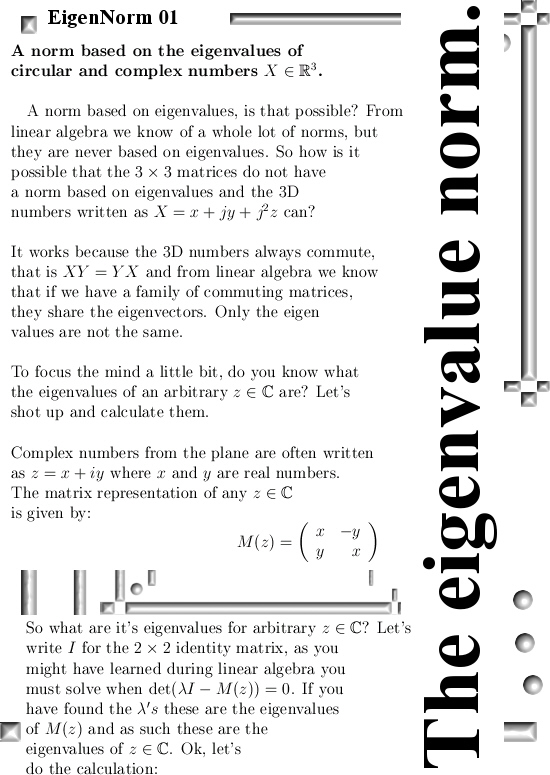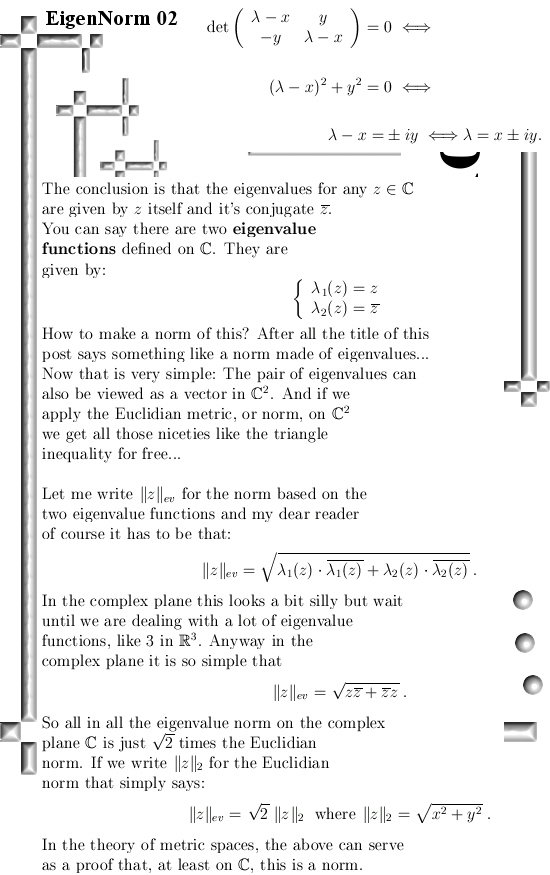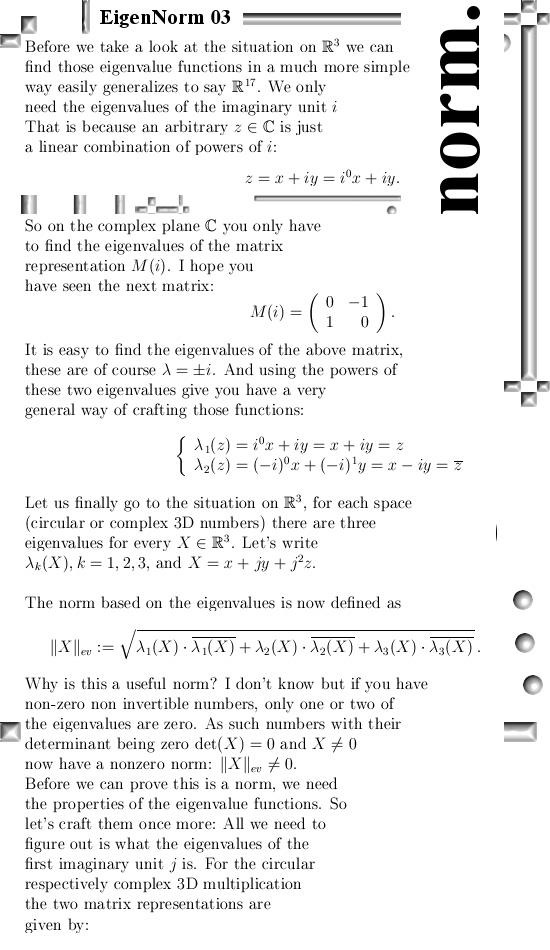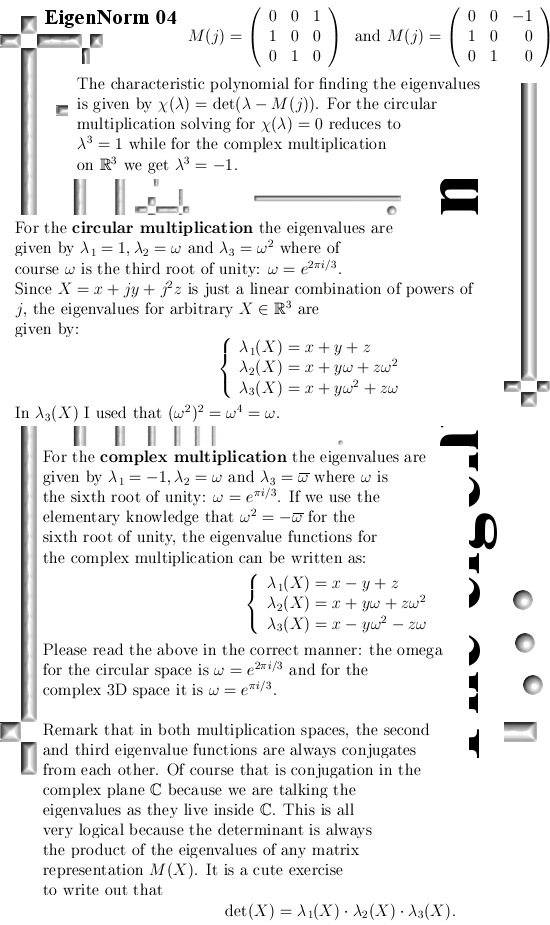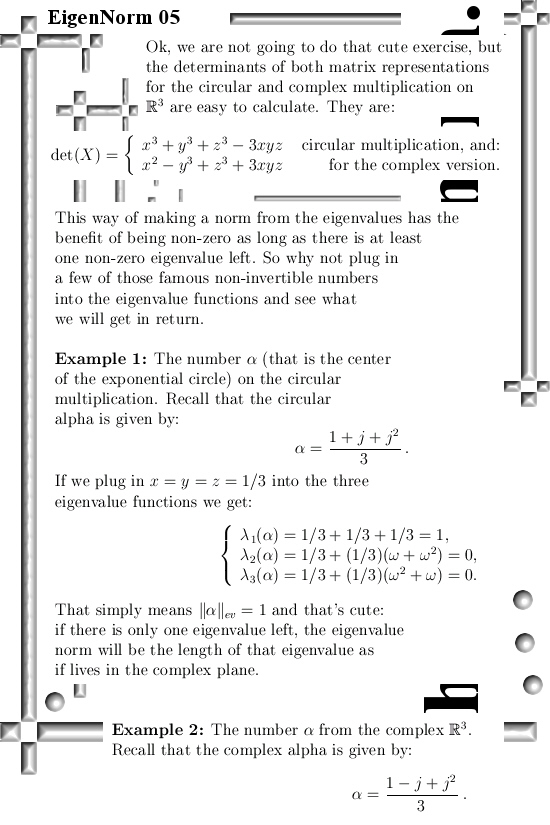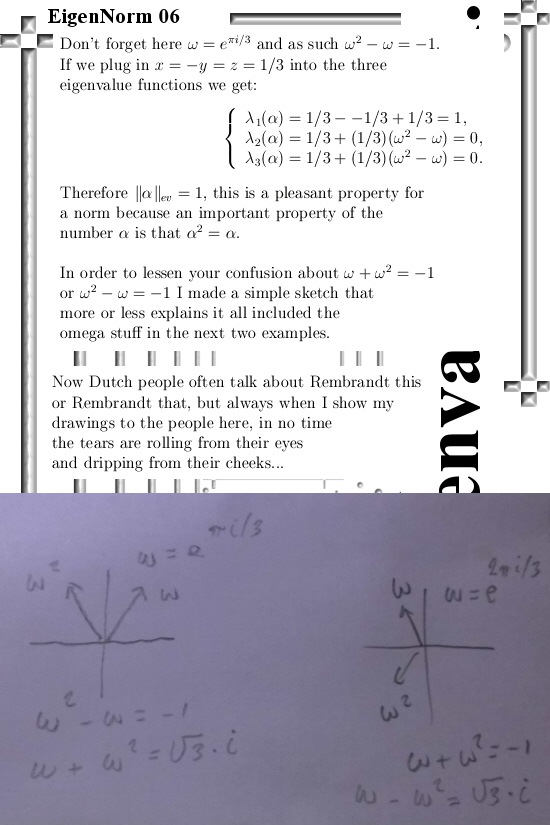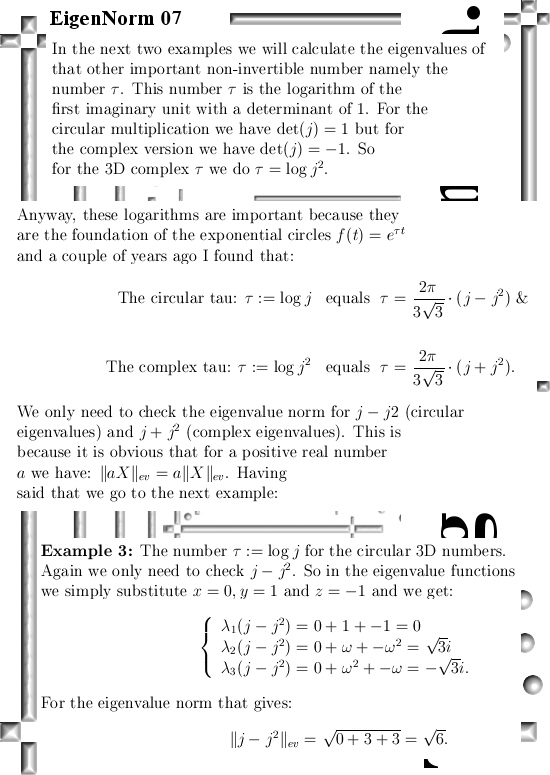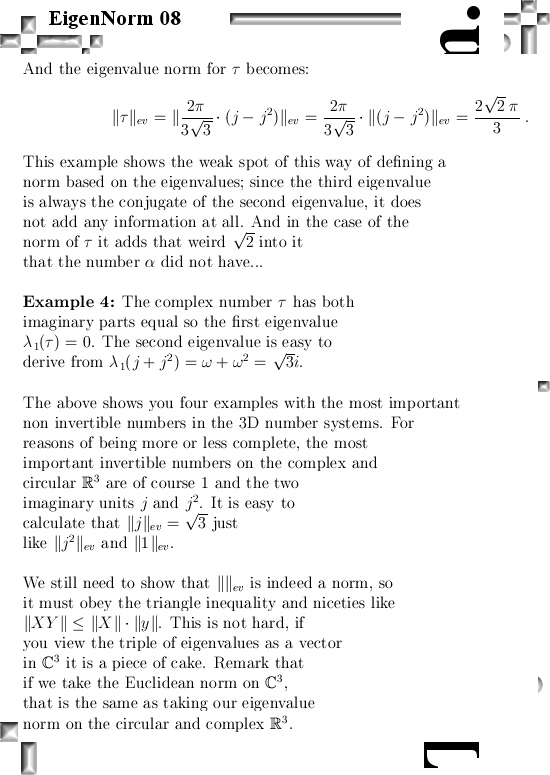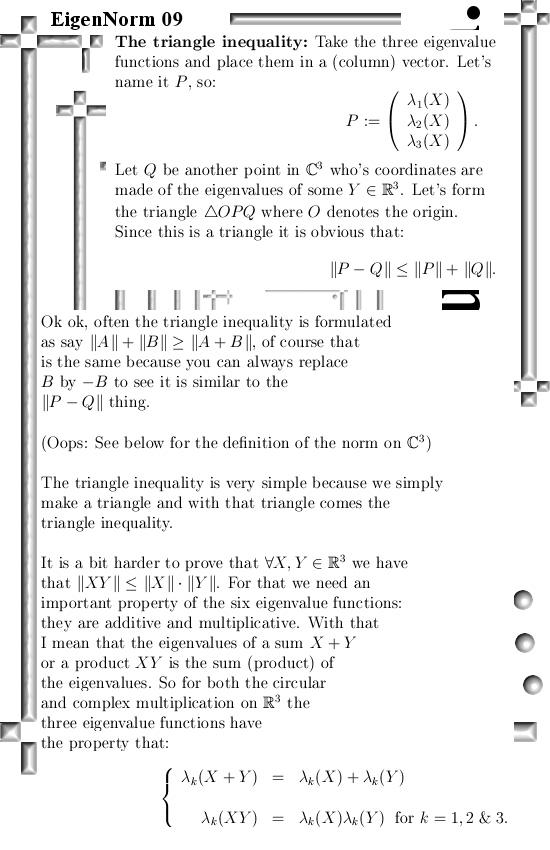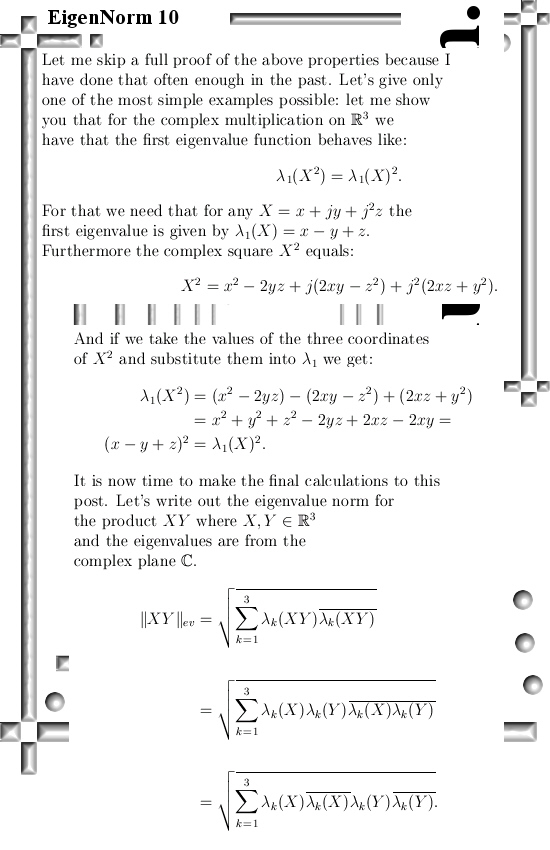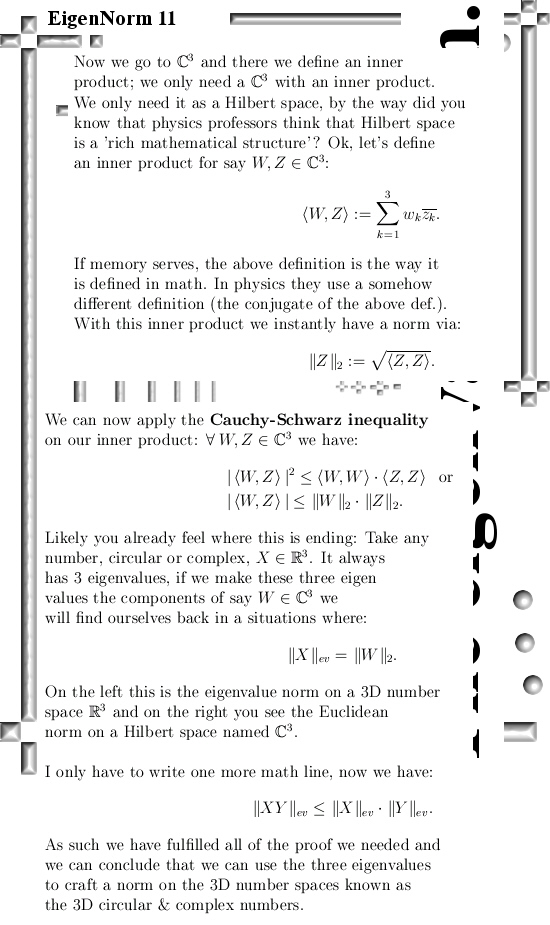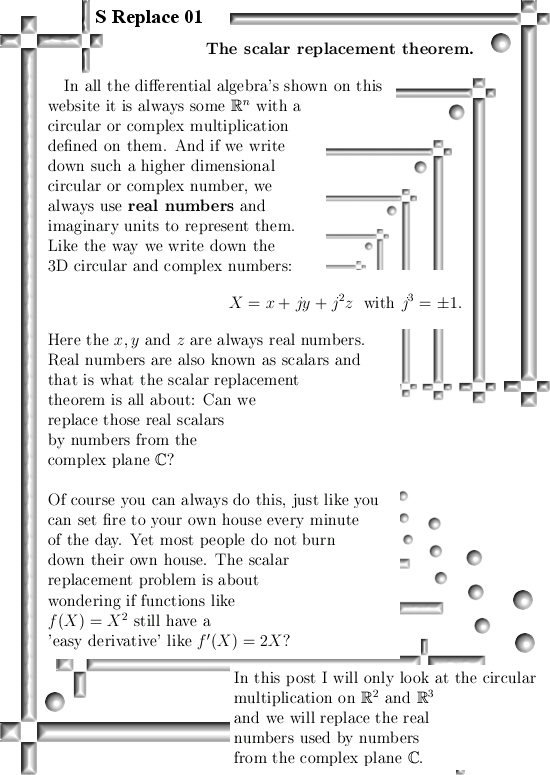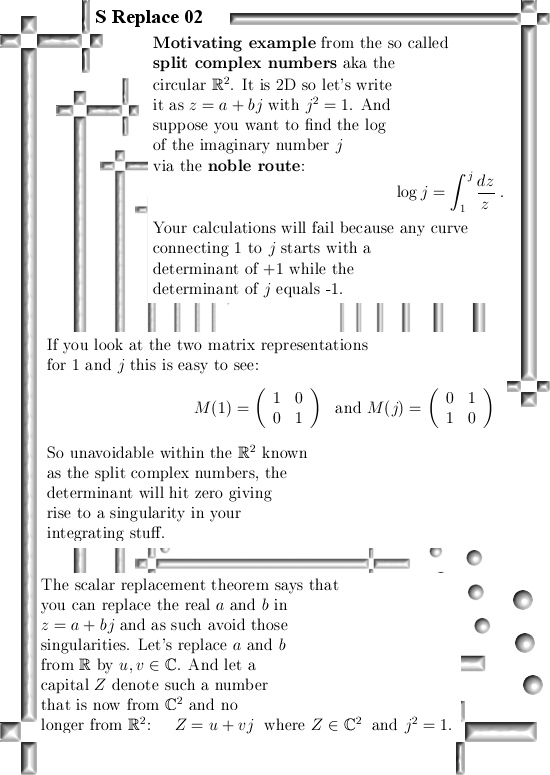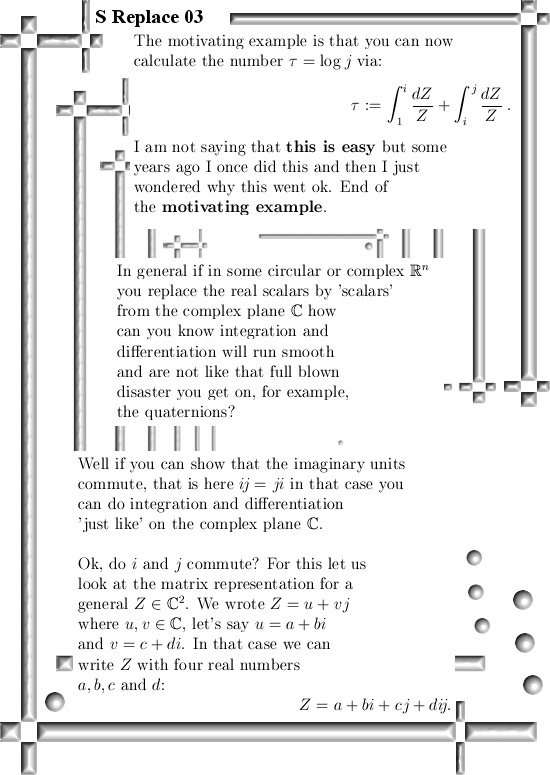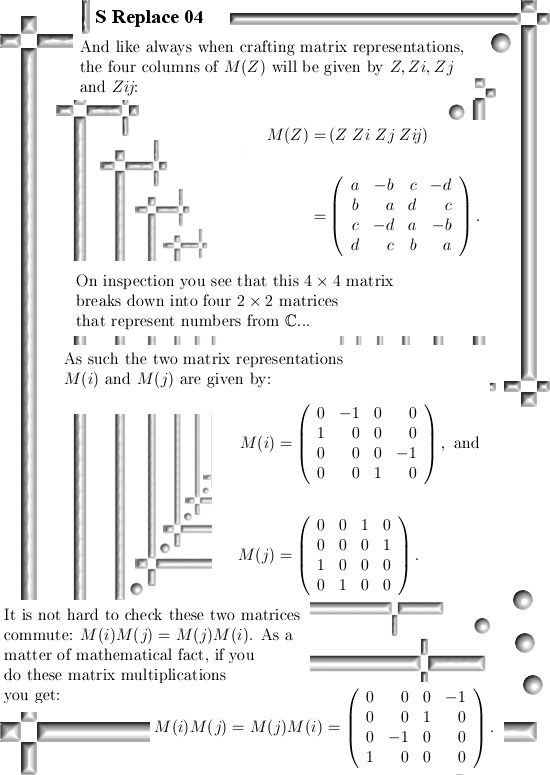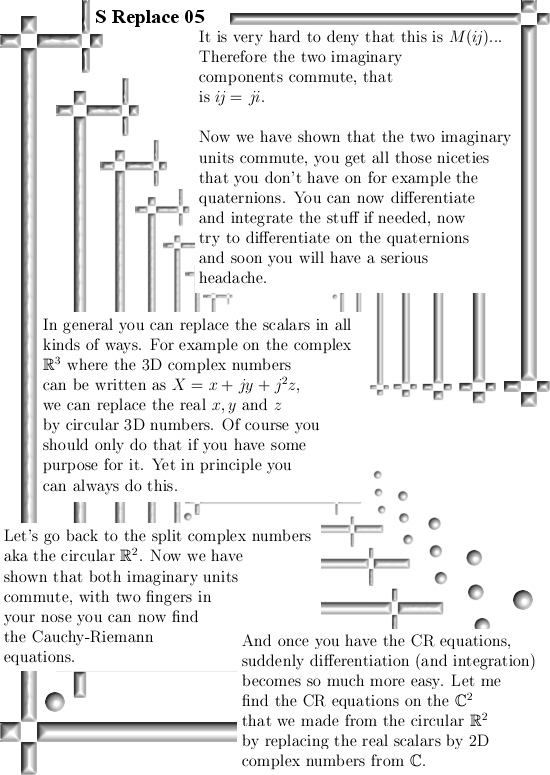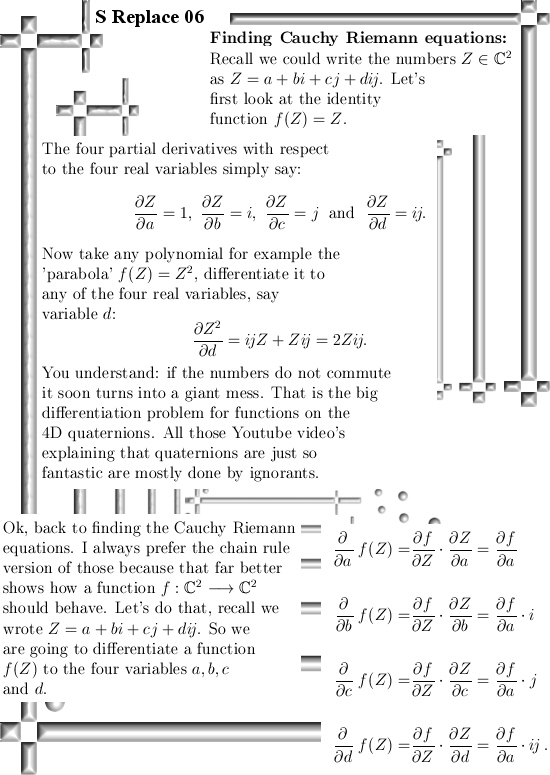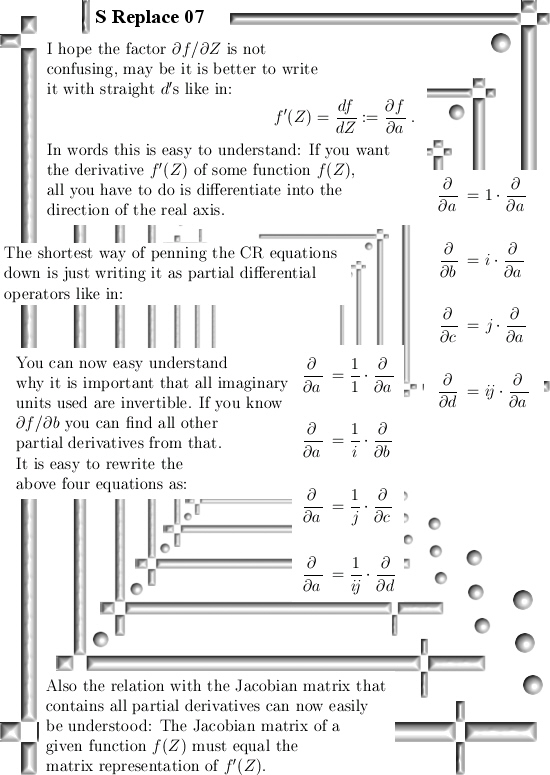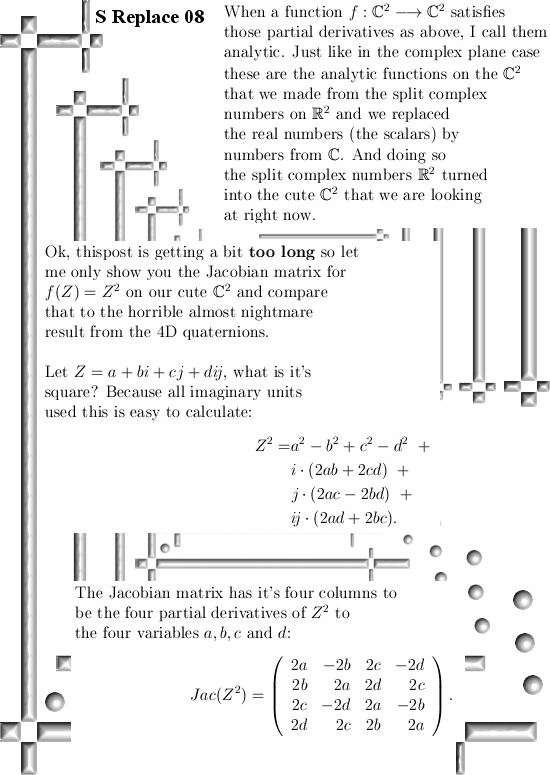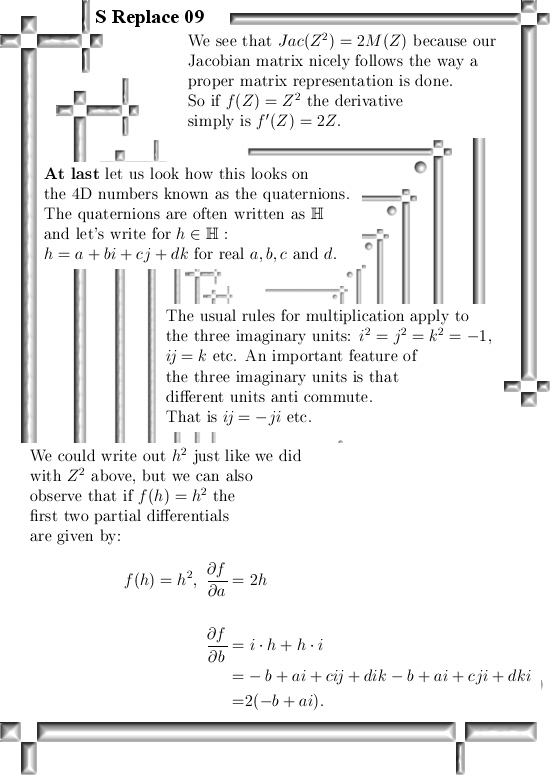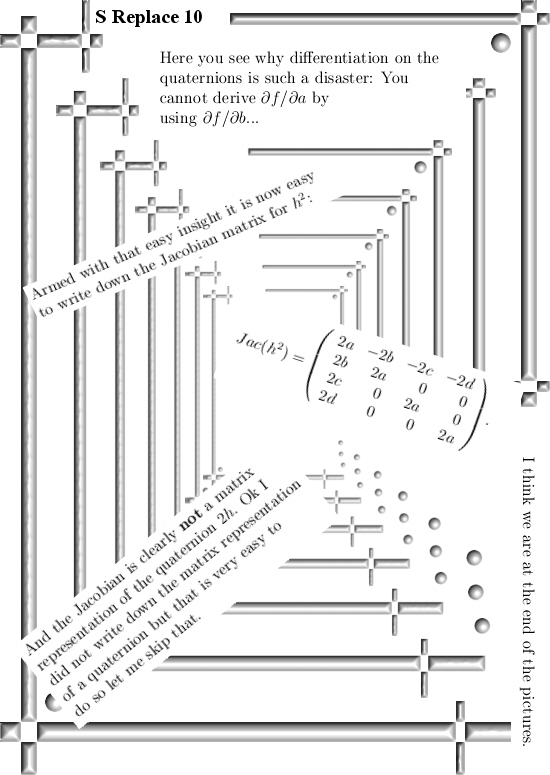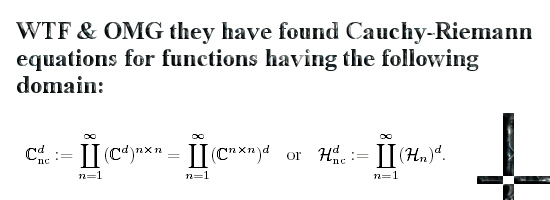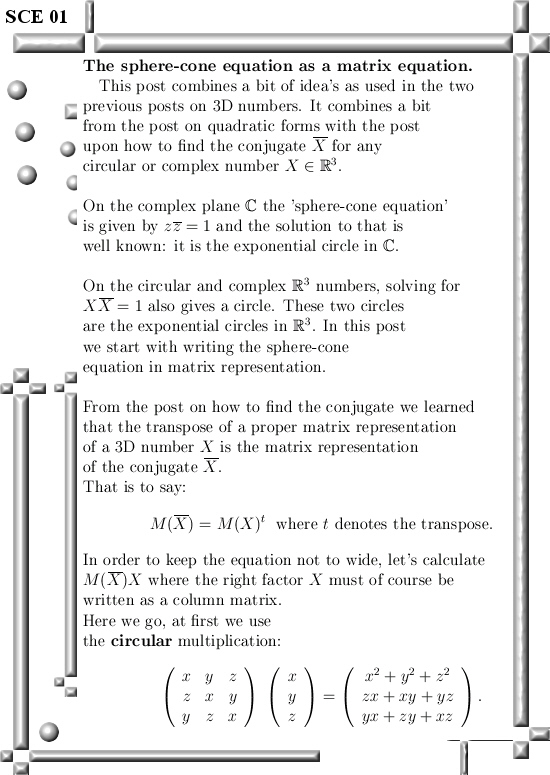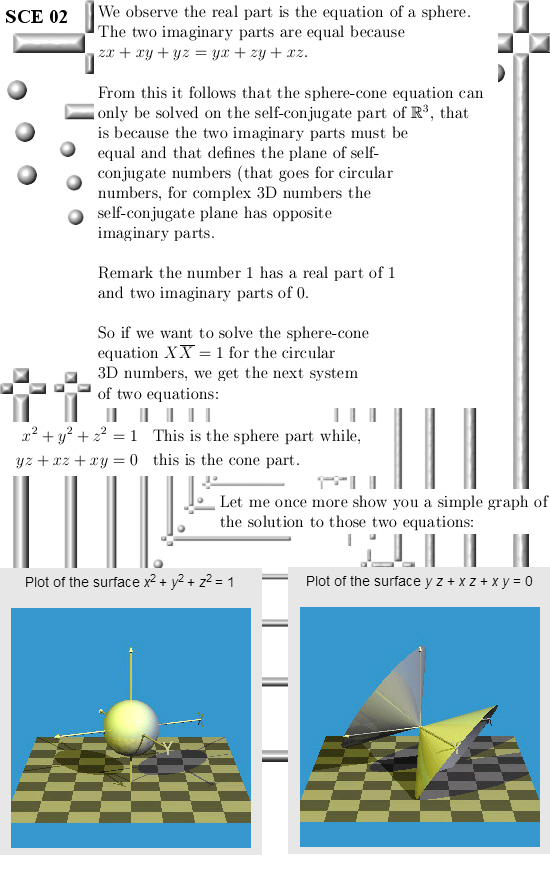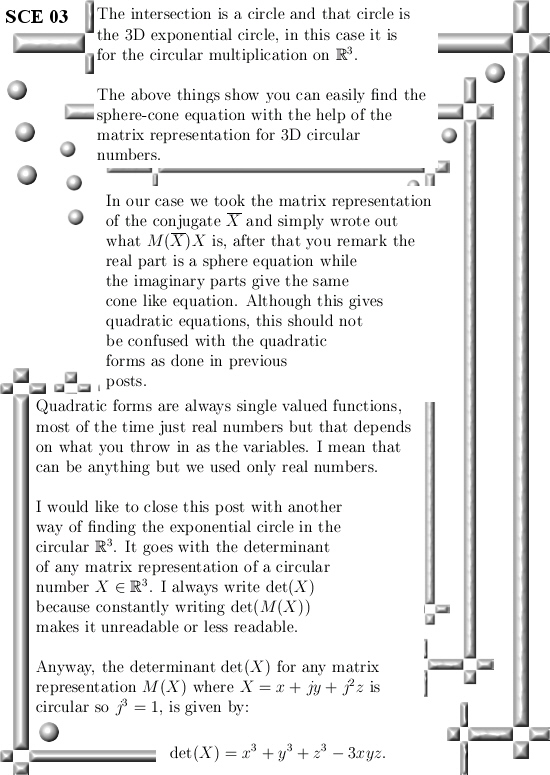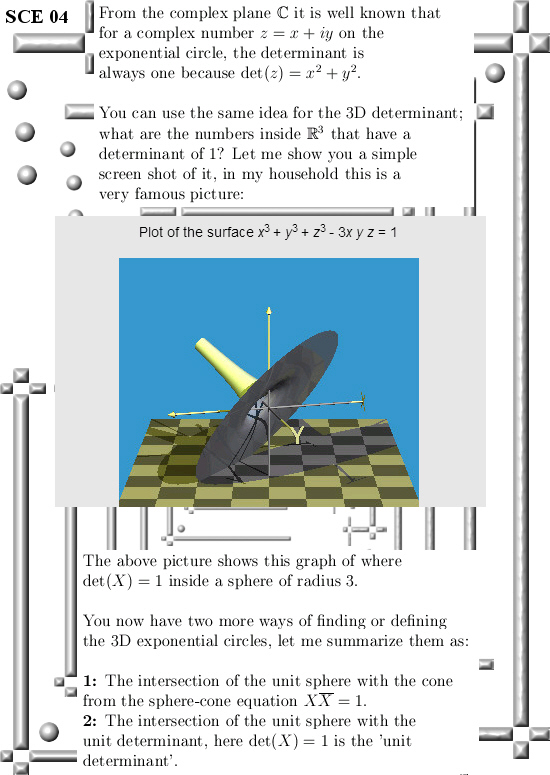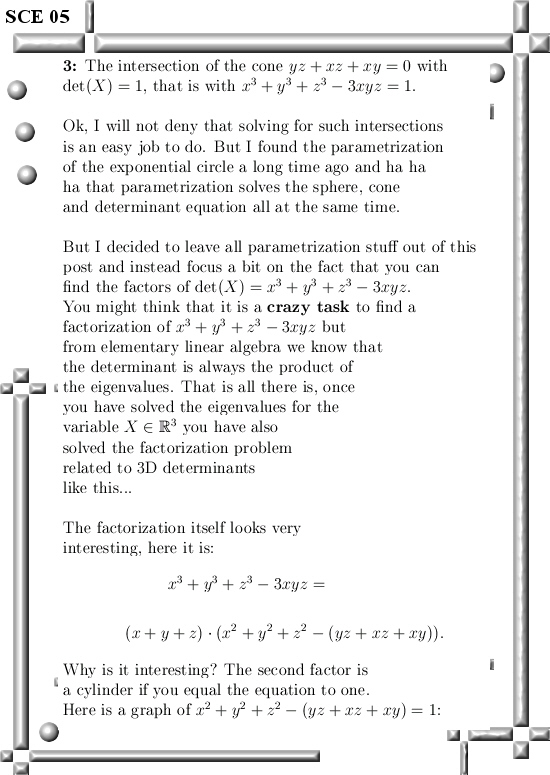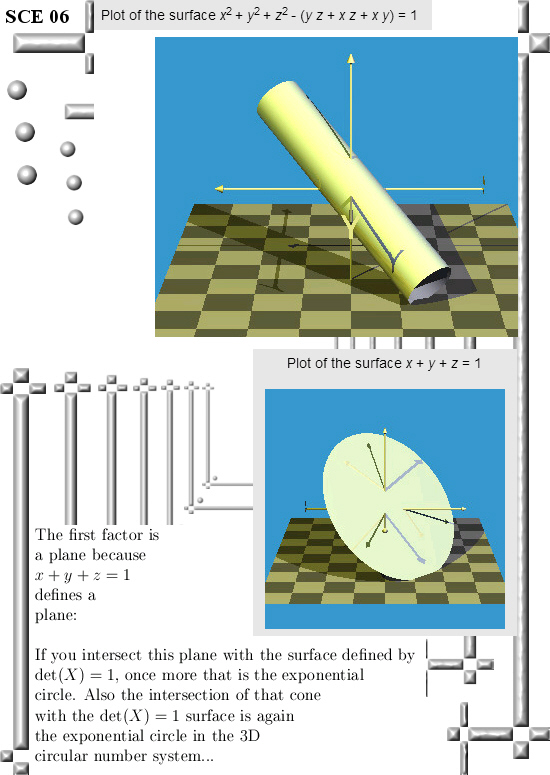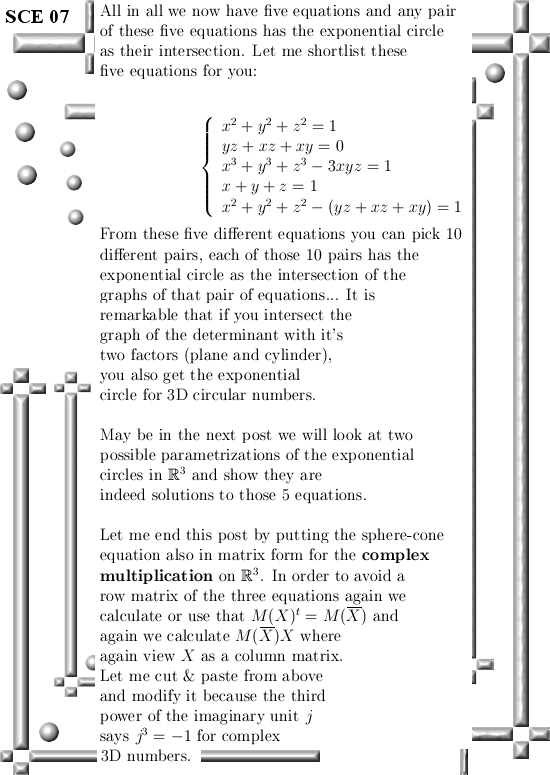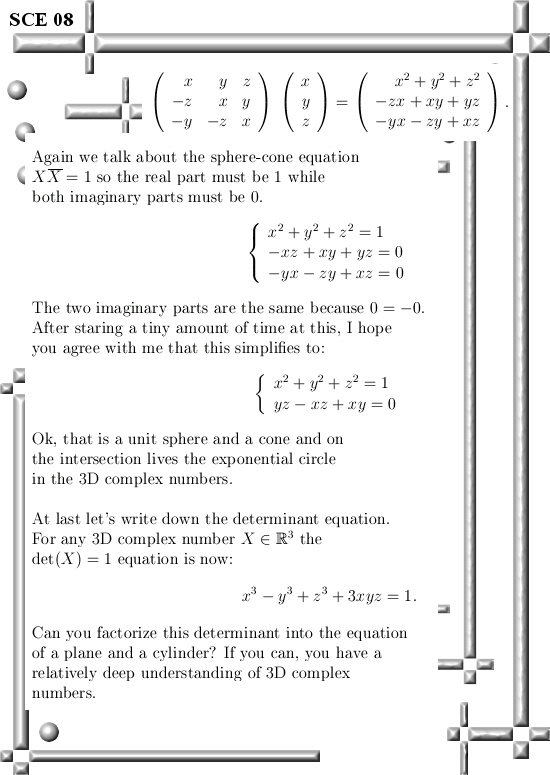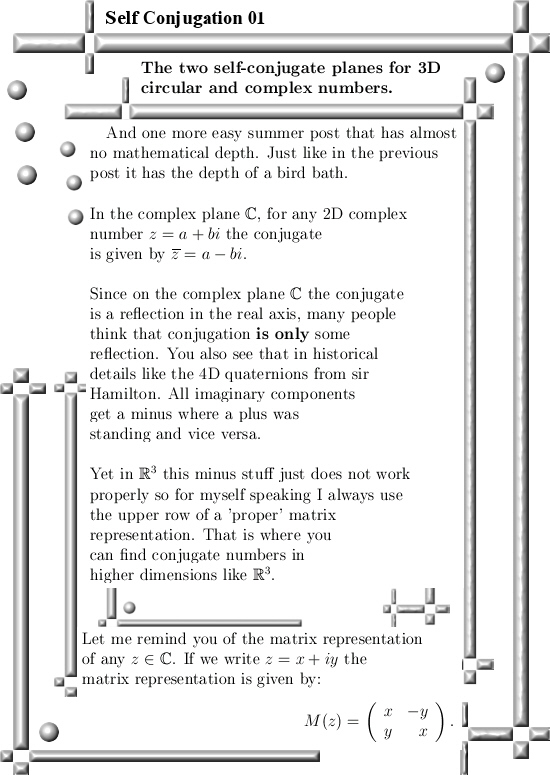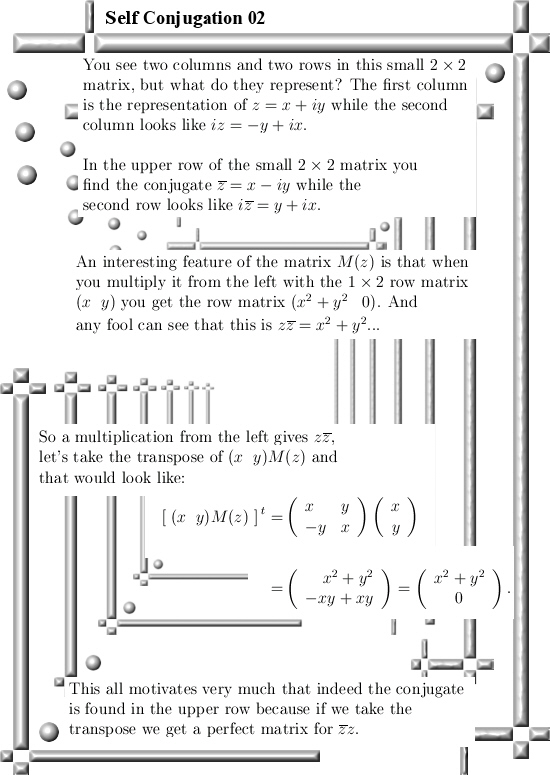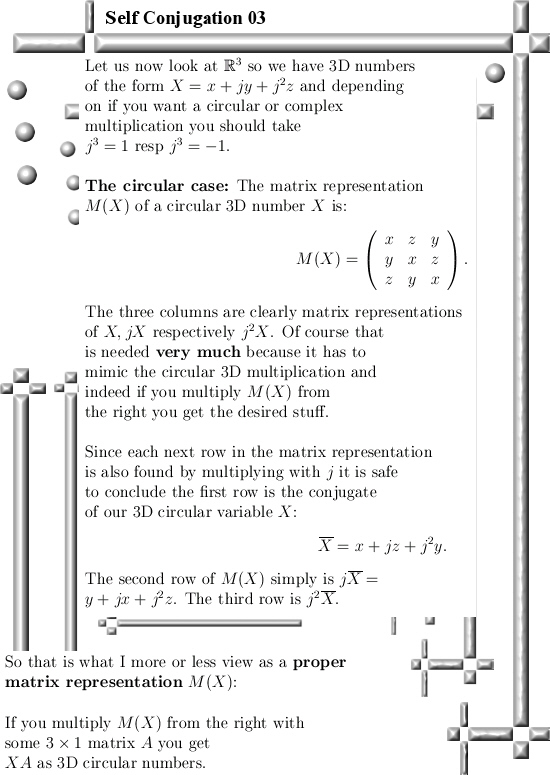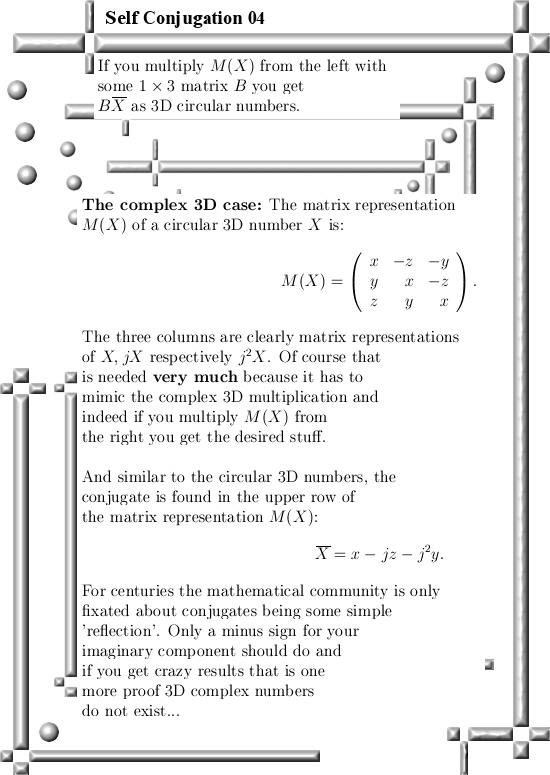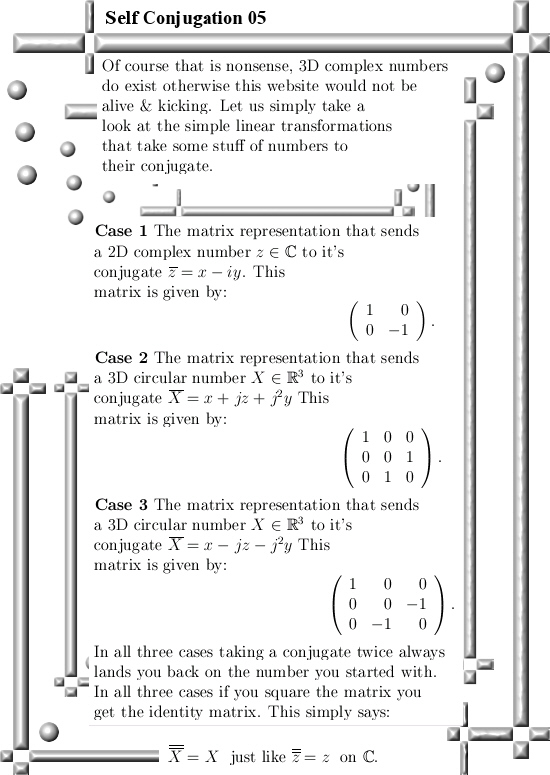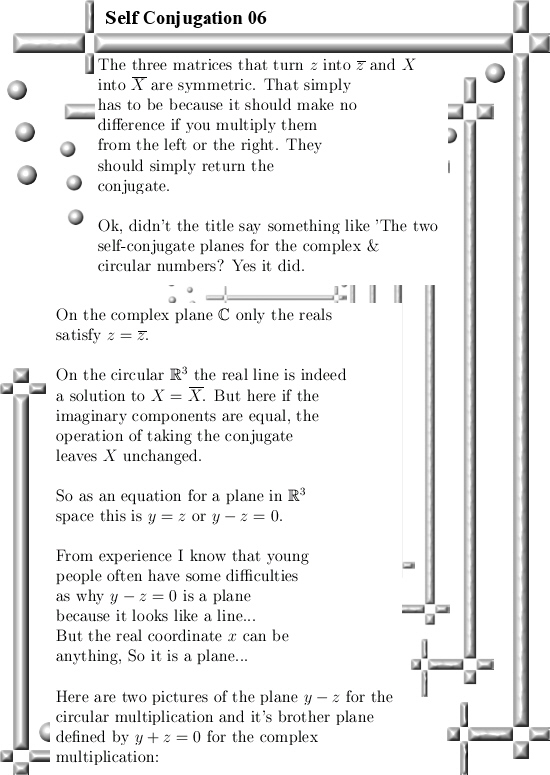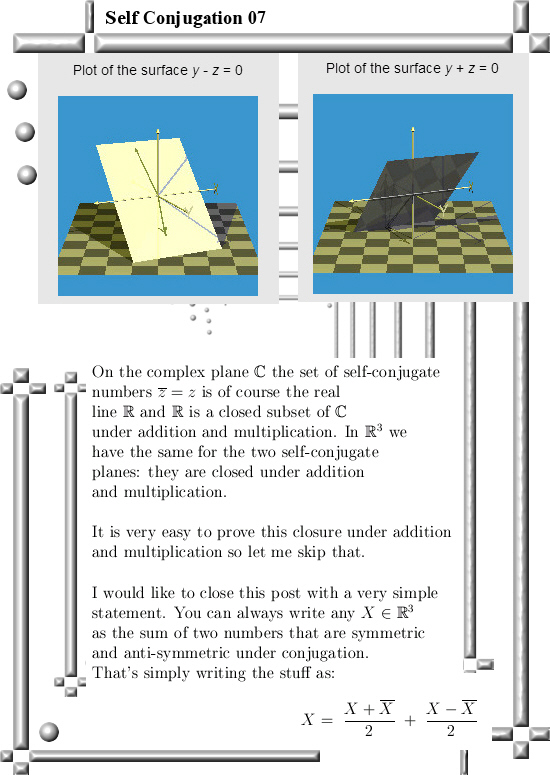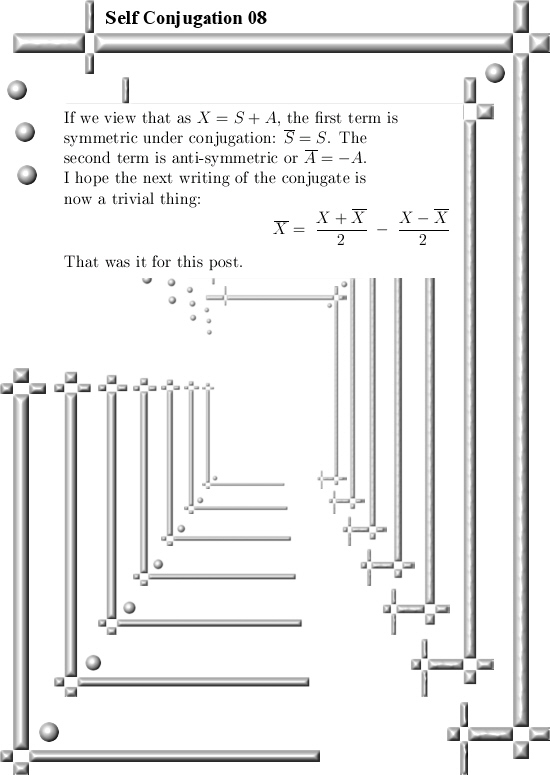It is late at night, my computer clock says it is 1.01 on a Sunday night. But I am all alone so why not post this update? This post does not have much mathematical depth, it is all very easy to understand if you know what split complex numbers are.
In the language of this website, the split complex numbers are the 2D circular numbers, In the past I named a particular set of numbers complex or circular. I did choose for circular because the matrix representations of circular numbers are the so called circulant matrices. It is always better to give mathematical stuff some kind of functional name so people can make sense of what the stuff is about. For me no silly names like ‘3D Venema positive numbers’ or ‘3D Venema complex numbers’. In math the objects should have names that describe them, the name of a person should not be hanged on such an object. For example the Cayley-Hamilton theorem is a total stupid name, the names of the humans who wrote it out are not relevant at all. Further reading on circulant matrices: Circulant matrix.
I also have a wiki on split complex numbers for you, but like all common sources they have the conjugate completely wrong. Professional math professors always think that taking a conjugate is just replacing a + by a – but that is just too simplistic. That’s one of the many reasons they never found 3D complex numbers for themselves, if you do that conjugate thing in the silly way all your 3D complex math does not amount to much…
Link: Split-complex number.
This is the last part on this oversight of counter examples to the last theorem of Pierre de Fermat and it contains only the two dimensional split complex numbers. When I wrote the previous post I realized that I had completely forgetten about the 2D split numbers. And indeed the math results as found in this post are not very deep, it’s importance lies in the fact that the counter examples now are unbounded. All counter examples based on modular arithmetic are always bounded, periodic to be precise, so professional math professors could use that as a reason to declare that all a bunch of nonsense because the real integers are unbounded. And my other counter examples that are unbounded are only on 3D complex & circular number spaces and the 4D complex numbers so that will be neglected and talked into insignificance because ‘That is not serious math’ or whatever kind of nonsense those shitholes come up with.
All in all despite the lack of mathematical depth I am very satisfied with this very short update. The 2D split numbers have a history of say 170 years so all those smart math assholes can think a bit about why they never formulated such simple counter examples to the last theorem of Fermat… May be the simplicity of the math results posted is a good thing in the long run: compare it to just the natural numbers or the counting numbers. That is a set of numbers that is very simple too, but they contain prime numbers and all of a sudden you can ask thousands and thousands of complicated and difficult questions about natural numbers. So I am not ashamed at all by the lack of math depth in this post, I only point to the fact that over the course of 170 years all those professional math professors never found counter examples on that space.
This post is just 3 pictures long although I had to enlarge the lastest one a little bit. The first two pictures are 550×825 pixels and the last one is 550×975 pixels. Here we go:
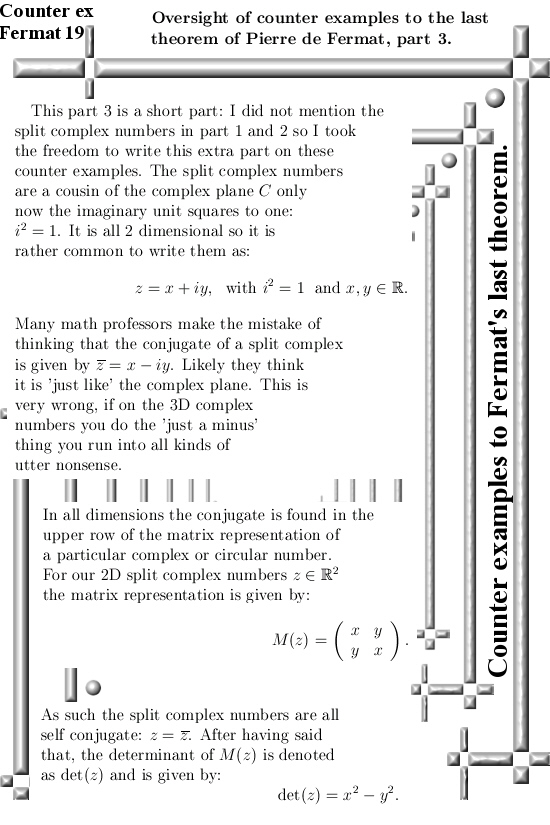
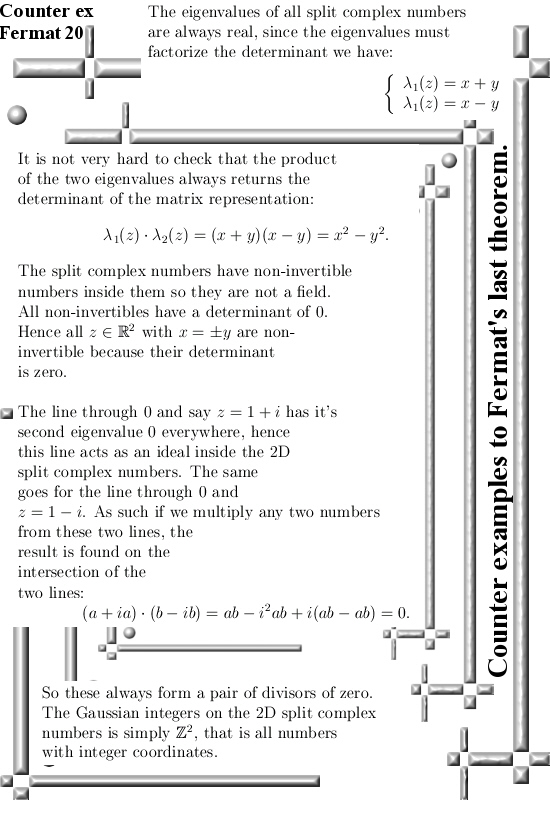
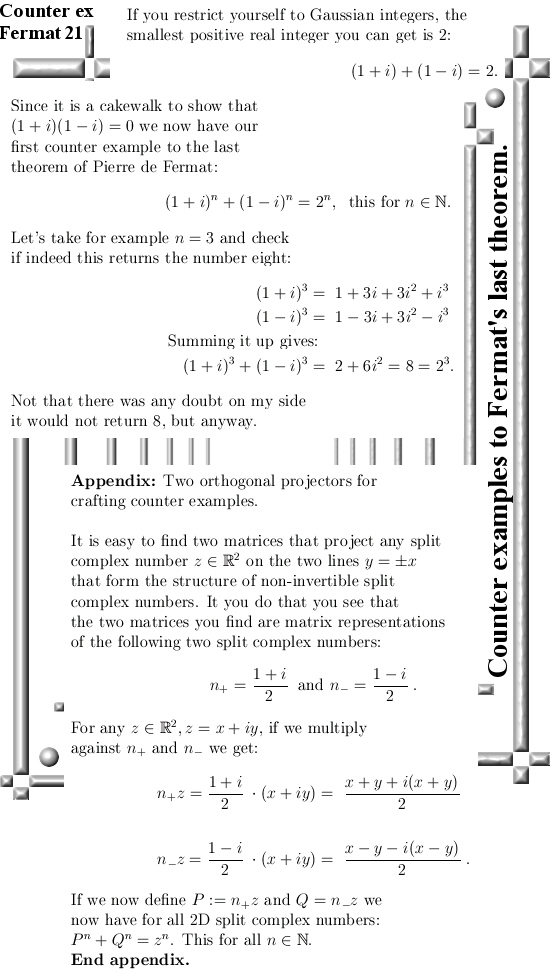
That was it for this post, one of the details as why this post is significant is the use of those projector numbers. You will find that nowhere on the entire internet just like the use of 3D complex numbers is totally zero. Let’s leave it with that, likely the next post is about magnetism and guess what? The physics professors still think there is no need at all to give experimental proof to their idea of the electron having two magnetic poles. So it are not only the math professors that are the overpaid idiots in this little world of monkeys that think they are the masters of the planet.
